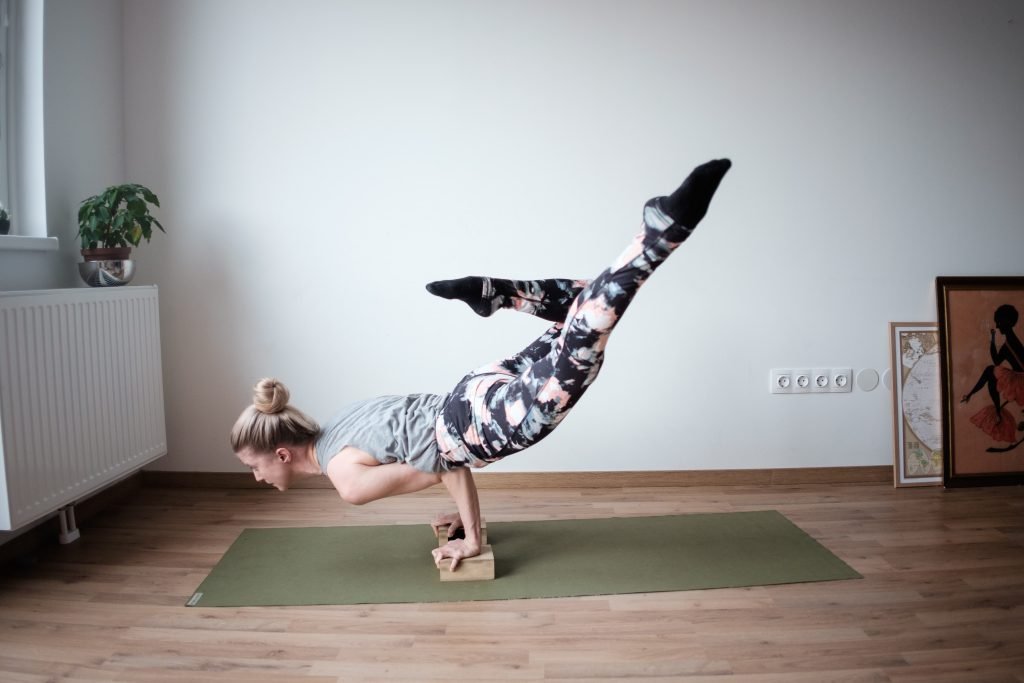
Discover the secret to improved flexibility and injury prevention with our product, “5 Simple Stretches for Increased Flexibility and Injury Prevention”. These five easy-to-follow stretches will help you achieve greater flexibility and reduce the risk of injuries. Whether you’re an athlete, a fitness enthusiast, or simply looking to enhance your overall wellness, this product is designed to cater to your needs. Say goodbye to stiffness and hello to a more flexible and injury-resistant body with our 5 Simple Stretches.

Stretching for Increased Flexibility and Injury Prevention
Stretching is an essential component of any fitness routine, as it not only helps to improve flexibility but also prevents injuries. Whether you are an athlete, a fitness enthusiast, or just someone looking to stay active and maintain a healthy lifestyle, incorporating stretching into your daily routine can have numerous benefits. In this article, we will explore why flexibility is important, the benefits of stretching, and provide tips on how to stretch safely. Additionally, we will introduce you to ten simple stretches that can help improve your flexibility.
Why is flexibility important?
Flexibility refers to the range of motion in your joints and muscles. It plays a crucial role in your overall physical performance and well-being. Having good flexibility allows you to move freely and easily, whether you are performing athletic activities, completing daily tasks, or simply enjoying recreational activities.
Furthermore, improved flexibility can enhance your athletic performance by increasing your efficiency and power. It enables you to move through a greater range of motion, which can optimize your technique and prevent strain on your muscles and joints. Moreover, flexibility has been shown to reduce the risk of injuries during physical activity by ensuring that your muscles and tendons can handle the demands placed on them.
The benefits of stretching
Stretching has numerous benefits that go beyond just improving flexibility. By incorporating regular stretching into your fitness routine, you can enjoy the following advantages:
-
Increased Range of Motion: Stretching helps to lengthen your muscles and tendons, which in turn increases your range of motion. This can be particularly beneficial for athletes and individuals involved in activities that require a wide range of motion, such as dancers and gymnasts.
-
Enhanced Performance: Improved flexibility can enhance your physical performance by allowing you to move more efficiently and effectively. It can help improve your speed, agility, and overall athletic abilities.
-
Injury Prevention: Stretching helps to improve the flexibility and elasticity of your muscles, reducing the risk of injuries. When your muscles are more pliable, they are less likely to strain or tear during physical activity.
-
Muscle Recovery: Stretching after a workout can help reduce muscle soreness and aid in the recovery process. It allows your muscles to relax and promotes blood flow, which delivers oxygen and nutrients to the muscles, aiding in their repair and growth.
-
Improved Posture: Tight muscles can contribute to poor posture, leading to discomfort and potential long-term issues. Stretching helps to release tension in muscles that may be causing poor posture, promoting a more aligned and balanced body.
How to stretch safely
While stretching offers numerous benefits, it is important to practice safe stretching techniques to avoid injury. Follow these guidelines to ensure that you are stretching safely:
-
Warm-up: Before stretching, it is crucial to warm up your muscles with light aerobic activity such as jogging or jumping jacks. This increases blood flow to your muscles, making them more pliable and less prone to injury.
-
Hold and Breathe: When stretching, gently move into the stretch until you feel a slight tension, but not pain. Hold the stretch for 15-30 seconds and remember to breathe deeply and relax your muscles.
-
Don’t Bounce: Avoid bouncing or jerking movements while stretching, as this can lead to muscle strain or injury. Instead, focus on slow and controlled movements.
-
Adapt to Your Level: Choose stretches that are appropriate for your flexibility level. As you progress, you can gradually increase the intensity and duration of your stretches.
-
Stretch Both Sides: It is important to stretch both sides of your body equally to maintain balance and symmetry. Focus on stretching all major muscle groups.
-
Cool Down: After stretching, cool down with light cardio and gentle movements to help your body transition back to its resting state.
Now that you understand the importance of flexibility and the benefits of stretching, let’s explore ten simple stretches that can improve your flexibility and prevent injuries.
Simple Stretches to Improve Flexibility
1. Neck Stretch
To stretch your neck, sit or stand up tall with your shoulders relaxed. Slowly tilt your head to one side, bringing your ear closer to your shoulder. You should feel a gentle stretch along the opposite side of your neck. Hold the stretch for 15-30 seconds, then repeat on the other side.
2. Shoulder Stretch
Stand tall with your feet hip-width apart. Reach one arm across your chest and use your other arm to gently pull it closer to your body. You should feel a stretch in your shoulder and upper back. Hold for 15-30 seconds, then switch sides.
3. Hamstring Stretch
Sit on the floor with your legs extended in front of you. Reach forward with your hands, trying to touch your toes. If you can’t reach, don’t worry – go as far as is comfortable. Hold the stretch for 15-30 seconds, feeling the stretch in the back of your thighs.
4. Quadriceps Stretch
Stand tall and bring one heel up towards your glutes, grabbing it with your hand. Gently pull your heel closer to your body until you feel a stretch in the front of your thigh. Hold for 15-30 seconds, then switch sides.
5. Calf Stretch
Stand facing a wall and extend one leg behind you, keeping your foot flat on the ground. Lean forward, placing your hands on the wall for support. You should feel a stretch in your calf. Hold for 15-30 seconds, then switch sides.
6. Hip Flexor Stretch
Kneel on one knee with your other foot flat on the floor in front of you. Lean forward, keeping your back straight, until you feel a stretch in the front of your hip. Hold for 15-30 seconds, then switch sides.
7. Groin Stretch
Sit on the floor and bring the soles of your feet together. Holding onto your ankles, gently press your knees towards the ground. You should feel a stretch in your inner thighs. Hold for 15-30 seconds.
8. Back Stretch
Lie on your back and pull your knees towards your chest, hugging them with your arms. You should feel a gentle stretch in your lower back. Hold for 15-30 seconds.
9. Chest Stretch
Stand tall and interlace your fingers behind your back. Gently straighten your arms and lift them up, feeling a stretch in your chest and shoulders. Hold for 15-30 seconds.
10. Ankle Stretch
Sit on the floor with your legs extended in front of you. Point your toes and flex them back towards your shins, stretching your ankles. Hold each position for 15-30 seconds.
Remember, it is important to listen to your body and stretch within your comfort zone. Do not push yourself to the point of pain. Regularly incorporating these stretches into your fitness routine can help improve your flexibility, enhance your performance, and reduce the risk of injuries. So, take a few minutes each day to stretch and reap the benefits for your body and mind. Stretching is a simple and effective way to take care of yourself and keep your body moving smoothly and comfortably.
